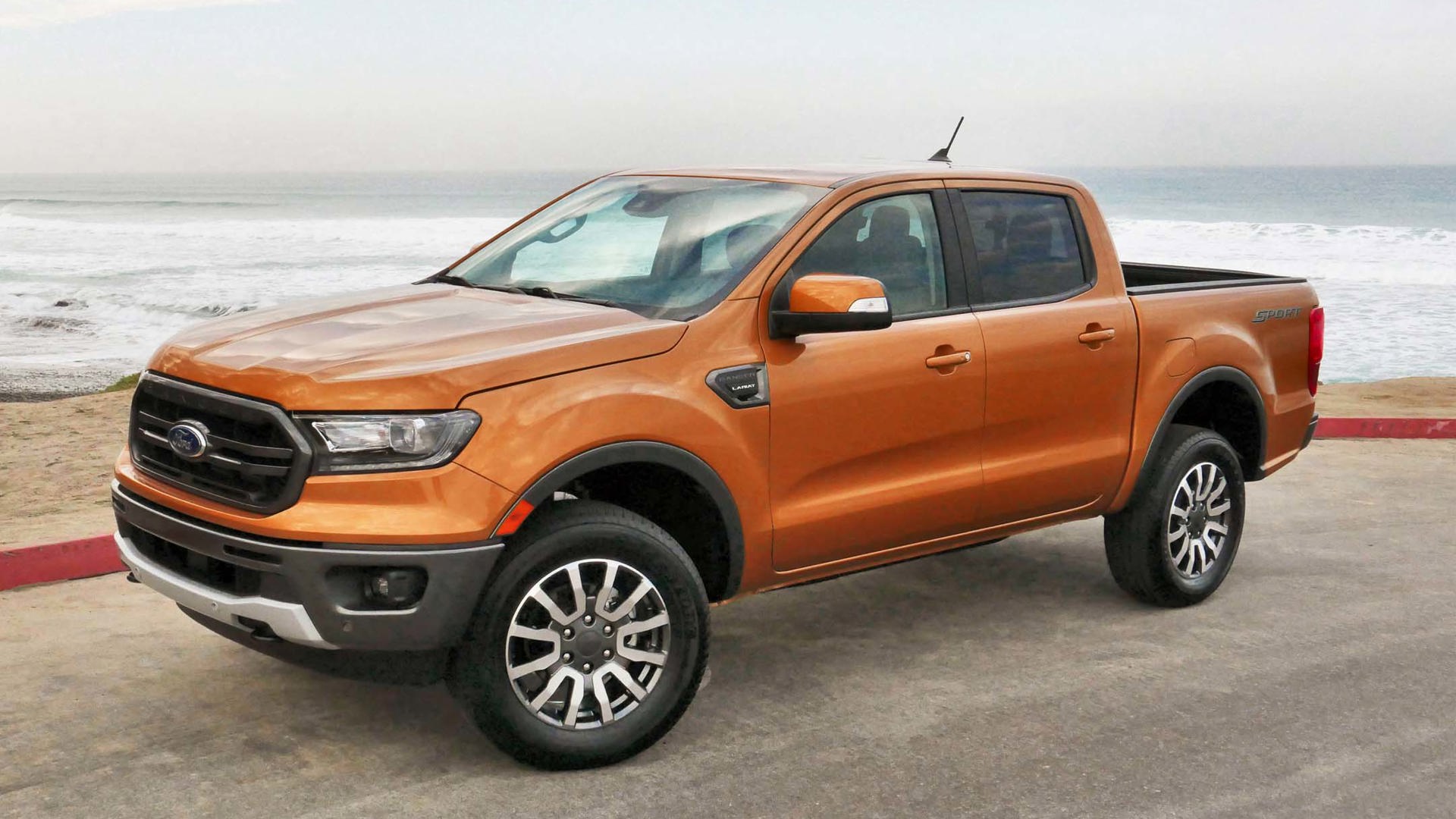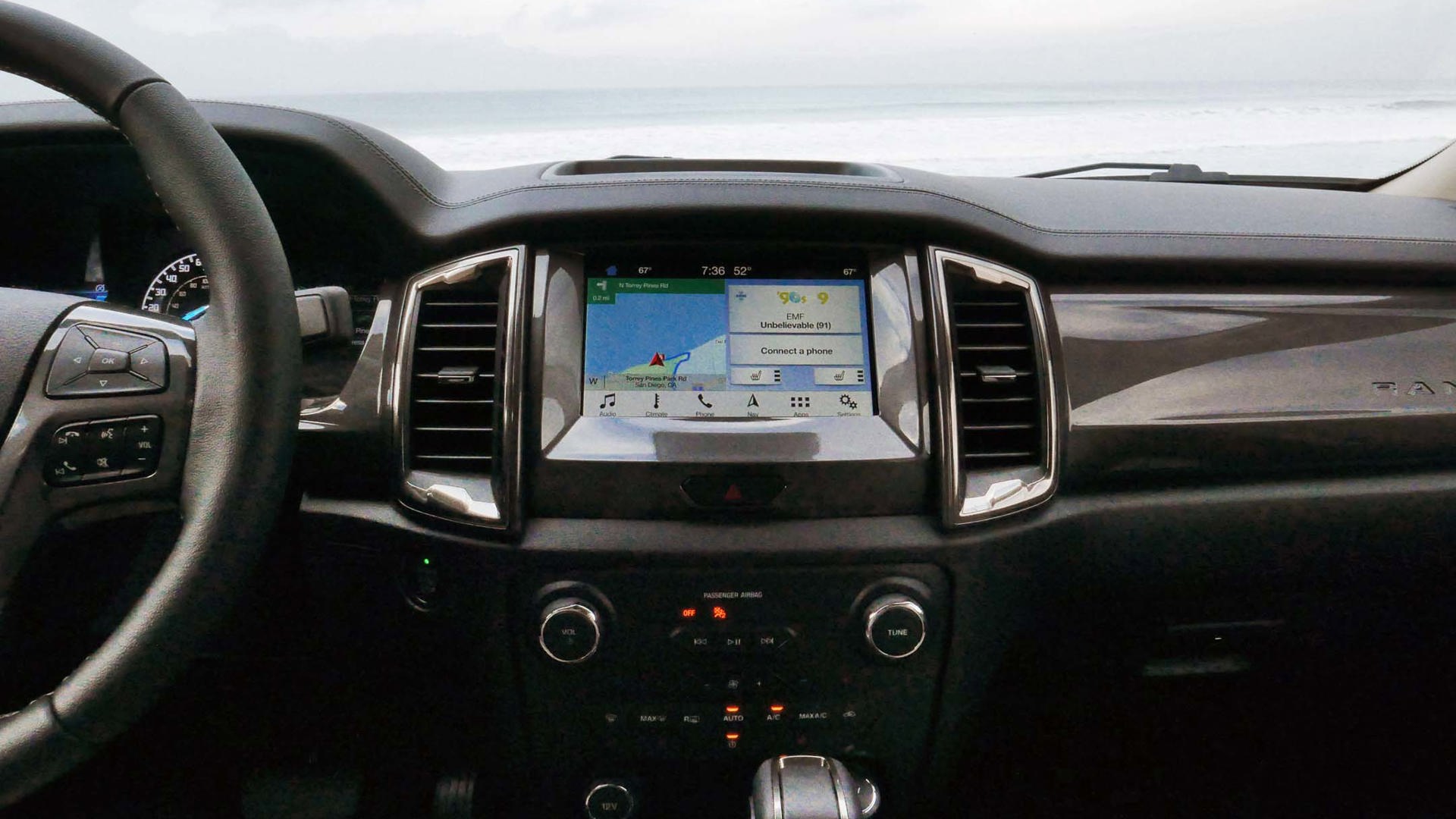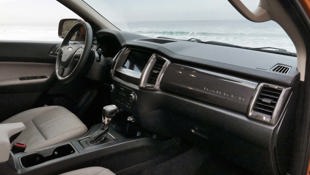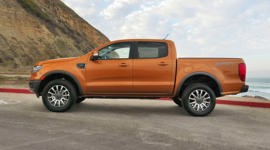Resurrection can be a tricky business. Although nearly a decade dormant in North America after years of slow sales truncated its time on this continent, the Ford Ranger mid-size pickup continued to live the double-life it had long been inhabiting on the global market, albeit riding on a substantially different platform more in tune with the wants and needs of Asian and South American truck buyers.
Fast-forward to 2018, however, and what was once a flagging segment dominated by a single vehicle – the Toyota Tacoma – has suddenly seen a surge in growth fed in part by the decision by General Motors to tackle its pan-Pacific rival with a pair of particularly popular mid-size haulers of its own – the Chevrolet Colorado and GMC Canyon. Suddenly locked out of a revenue stream now being tapped into by its long-time hometown nemesis, Ford was forced to raid its international fleet and repatriate the Ranger after years of downplaying the importance of mid-size trucks in the face of its F-150 sales juggernaut.
Is the 2019 Ford Ranger’s return to the showroom a triumph, or a try-out? Is it destined for scraps from a table already divided, or does it have a chance to carve out its own place based on more than mere nostalgia for the once-popular nameplate?
One or two sizes fits most
The easiest way to answer those questions is to put the Ranger through the expected paces that its would-be buyers would demand from a truck of its size. It was with this in mind that I travelled to southern California, where a row of fresh-off-the-line Rangers awaited me in coastal San Diego.
Unlike its full-size counterparts, Ford’s smaller truck isn’t being offered in the same dizzying panoply of models, body styles, and configurations. Buyers can choose between either a four-door SuperCrew with a five-foot box, or a SuperCab that adds an extra foot of horizontal cargo space but chops its rear doors by half and hangs them on a back-facing hinge. There is no single-cab model available, or even planned.
You can’t get all that creative when its comes to the drivetrain, either. Whereas both the Tacoma and GM’s Chevrolet Colorado / GMC Canyon twins provide the choice between either a four-cylinder or a V6 engine (with the Chevy and GMC also adding a turbodiesel to the mix), the Ford Ranger sticks exclusively to a turbocharged 2.3-litre gasoline four-cylinder matched with a 10-speed automatic transmission. Rated at 270 horsepower and 310 lb-ft of torque, it beats the twist offered by its competitors’ larger units while lagging behind somewhat in the horsepower department.
Four-wheel-drive is also standard in Canada (unlike down south where Americans have the freedom to get their rear-wheel-drive Ranger as stuck in the snow or mud as they want to).
Bigger than before
“Mid-size” is somewhat of a misnomer, given that the modern day has birthed a Ranger that is almost identical in length, width, and girth to the F-150 of a mere two generations ago. Still, it’s noticeably less massive than its full-size contemporaries, which is the metric that matters to the condo owners and suburban dwellers Ford is targeting with the truck.
Yes, that’s right: the new Ranger is much more of a “lifestyle” truck than a serious work vehicle, which makes sense for a number of reasons. Those who intend to regularly tow, haul, or plow, whether corporate customers or individual buyers, have been doing just fine without the Ranger for all of these years and won’t be lured away from the most popular pickup in Canada (the F-Series) under any circumstances.
For the rest of us, however, the 7,500 lb of towing capacity provided by the new Ford (when equipped with its trailer brake controller and towing package) is more than enough to get a boat to the lake and back twice a year, or tug the occasional U-Haul trailer filled with college furniture to the dorm room (while also tweaking the nose of Toyota and Chevrolet/GMC to the tune of about 10 percent). In addition, the Ranger’s shorter wheelbase (and front and rear parking sensors) makes it more manageable than a full-size truck in an urban environment, especially when on the hunt for street parking.
Respectably Rugged
It would be a mistake, however, to discount the Ford Ranger’s off-road capabilities based on the more casual crowd it’s aimed at. When equipped with the FX4 Off-Road package, the truck gains not just an electronically controlled limited-slip differential, but also all-terrain tires and the Terrain Management system, which automatically adjusts the vehicle’s stability and traction control systems based on the surface that’s about to be tackled.
Ford had lined up a mud pit, ultra-steep approach and departure climbs through dirt and stone, and massively, evil-angled earthen berms to demonstrate the efficacy of the Ranger’s outdoorsy equipment. I was impressed by how much nimbler the short-wheelbase truck was compared to how an F-150 would tackle the same course – particularly the sharp, narrow turns it required – and by the additional composure afforded by Terrain Management. Ford’s forward crawl control system, a sort of low-speed cruise control that’s effective at up to 7 mph (11 km/h), was also much smoother and quieter when driven back to back against Toyota’s implementation in the Tacoma TRD Off-Road truck.
Exceptional Engine
Most of the time, however, the Ranger is going to be driven on smooth, unscarred pavement, and it’s here that its 2.3-liter turbo four truly shines. Do not be put off by the lack of a V6 on the order sheet, as there’s significant forward thrust available at nearly all speeds, making the Ford one of the most responsive pickups in its class. Even when towing near its max, the Ranger never felt as though its diminished cylinder count was a handicap.
In terms of handling this is still a truck, of course, although less so than the more ponderous Tacoma. The Ranger is competent around town and doesn’t get in over its head when asked to shimmy its way down a twisting mountain two-lane, but if you’re looking for more of a crossover-style driving experience you’ll have to head to a Chevrolet or GMC showroom instead.
What’s Inside Doesn’t Match the Sticker
If there’s one area where the Ford Ranger reveals its foreign-market roots, it’s the interior. There’s decent rear passenger room available in the four-door, and child-friendly accommodations in the truncated SuperCab, but highway wind noise – particularly from the back doors of the SuperCrew – is surprisingly loud.
Then there’s the fit and finish of the cabin, which, while just riding the line of acceptable in the $30,969 entry-level XL trim, becomes harder to swallow once you’ve climbed up to the $42,289 Lariat model. A plain centre stack presentation and a lack of side support from the front buckets brings to mind a vehicle a cycle behind the current design standard, especially compared to the interiors available from GM’s mid-size trucks.
Feature count remains strong, however, with extras such as adaptive cruise control joining nice-to-have gear like LCD displays flanking the gauge cluster’s speedometer, Ford’s new SYNC 3 infotainment system, and Wi-Fi hotspot. Just keep in mind that if you plan to regularly head off the beaten path you might want to hold back on the adaptive cruise system, as its radar sensor is located perilously low on the bumper and likely won’t survive any harsh topographical encounters.
Testing the Market
The idea of paying more than $40k for a 7/8ths pickup is most likely a non-starter for a large swath of the market, period. It’s also worth pointing out that although less-mighty versions of the Colorado and Canyon start off $5K cheaper, even the weakest Tacoma will set you back $33,000, while top-tier models can be driven out the door at a startling $50,000.
The Ranger isn’t aimed at traditional truck customer, but rather those who would have chosen an SUV except for a need for legitimate off-road capability or an open cargo bed to haul their various lifestyle accessories. Is this cohort willing to overlook the workman-like aspects of the Ford Ranger’s interior? Given the massive popularity of the comparatively less refined Toyota, the answer would seem to be “Yes.” Will the Ranger be able to peel those not already on Team Toyota away from the swankier confines of the (more configurable) Colorado and Canyon? That might be more of a fight.
Pricing: 2019 Ford Ranger
XL SuperCab 4x4: $30,969
XLT SuperCab 4x4: $35,539
XLT SuperCrew 4x4: $37,339
Lariat SuperCrew 4x4: $42,289
A/C Tax: $100
Destination and Delivery: $1,800











































